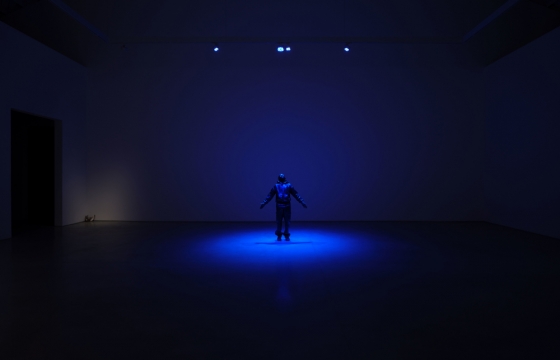
"Known for her conceptual practice that incorporates familiar objects and symbols from Black visual culture-including football equipment, peacock chairs, lowriders and butterflies-Mohamoud reimagines her source materials by transforming their scale and layering cultural references to recontextualize their interpreted meaning. The exhibition's title comes from Gil Scott-Heron's spoken word poem Comment #1 (1970), which earnestly describes the violence of racial and social inequality in America during that time."
"In combination with lighting effects, mirrored reflections and the gradual decay of organic matter throughout the exhibition, Mohamoud's figurative sculptures poetically evoke legacies of generational trauma while also allowing for moments of beauty and introspection. In I Can't Forget You (My Whole World Turns Blue), a teenage boy in a hooded sweatshirt stands with his arms outstretched, alluding to both images of tragic gun violence and heavenly ascension."
New figurative sculptures center on the loss of innocence experienced by Black youth and trace how such experiences become imprinted on the body, mind, spirit, and soul. Familiar objects and symbols from Black visual culture—football equipment, peacock chairs, lowriders, butterflies—are transformed in scale and layered with cultural references to recontextualize meaning. Lighting effects, mirrored reflections, and the gradual decay of organic matter accentuate legacies of generational trauma while permitting moments of beauty and introspection. Works like I Can't Forget You (My Whole World Turns Blue) and ...NUMB confront images of gun violence, heavenly ascension, and a child's first contemplation of mortality.
Read at Juxtapoz
Unable to calculate read time
Collection
[
|
...
]